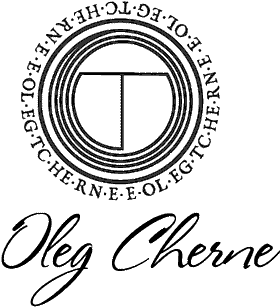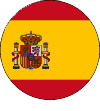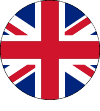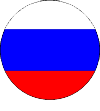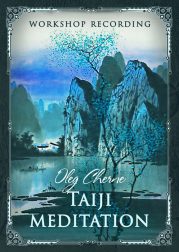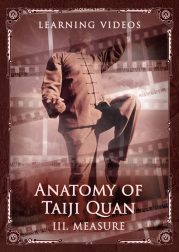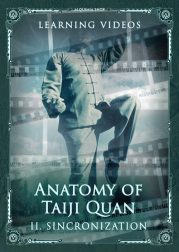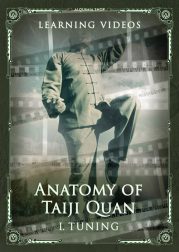Lan Zha Yi
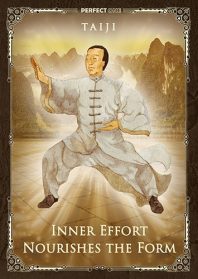
If great knowledge does not flow outward from within, motion cannot continue.
Lan Zha Yi (懒扎衣) is the second formula of motion. Its name can be translated as “gather up the robe leisurely” or “tie up the robe while remaining centered”. Its other name means “inner power (forcefulness) supports the form”.
When you reach this level in the practice, you start getting ready to muster your willpower. One (stance) becomes two (force and focus), which helps you achieve an understanding of the art of centering yourself around your core (abdomen), your stupa. At this stage, beginners start shaping their core, while those who are continuing their studies work on perfecting it.
This formula can be either a standalone or a continuation of the previous formula. In either case, finding your fulcrum is what’s important. In the Lan Zha Yi
formula, the Yang energy unwinds, while the Yin energy winds up. The internal directs, the external follows. The external must listen to the internal. The balance is built up starting from the right arm and the left leg. This formula creates the image of an entity that is round on the outside and square on the inside. The hidden symbol is that of a dragon, which still lies dormant deep within, as now is not yet the time to take action.
In this formula, it is important to find your fulcrum and spin the thread at the same time. It’s not yet time for action; at this stage, it is important to learn how to safeguard your energy. The external here is sustained by inner stillness.
The secret of the Lan Zha Yi formula is to measure your motion so that you don’t stop midway and don’t open yourself too much. Our transformation depends on the way we move. Here, it is very important to master inner stability, which we draw from the previous position, “Diamond Power Pounded in a Mortar.”
As for the “Inner Power Supports the Form” formula, it rests upon the eponymous stance, which helps you close up from within. This is important to understand before beginning to move. This formula reveals the interrelation between the arms and the legs, through a powerful fulcrum in the core, which is the formula’s defining characteristic.
“Tying up” or “pulling at” the imaginary robe means being capable of holding on to something. This something can be a knee, a sole, or a wrist. This formula can also be interpreted as an attempt to wrap yourself in some kind of clothing by applying force to your abdomen, which relies on the realization of your fulcrum. It is very important to apply force to both the right and the left arm, as though pushing them through a robe’s sleeves.
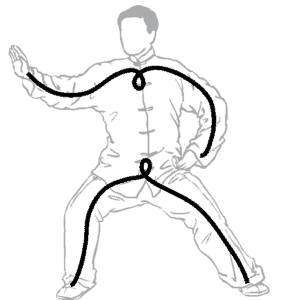
The position of the legs
The legs even out the force, allowing the hips to steady the lower body. The motion begins from the left leg and reaches completion when the body weight shifts to the right leg. After completely shifting the center of gravity to one of the legs and touching the ground, make a sliding motion with the other leg. The knees must not relax; keep them tense.
In the basic stance — Inner Power Supports the Force, grind your left heel into the floor while pressing against your left toes (and your right toes too) as if demanding power. Otherwise, your upper body will not find a link to the lower body.
Overall, the sole of your back foot should be slightly turned inward, forming the Chinese character ba (eight) together with your front foot (i.e., the right foot). You must place the proper tension on your sinews to stabilize your stance through the load on your right and left knee. This way, the inner energy from the blood vessels of your front (right) leg supports the lower stomach, while the Jin force ( 劲, Chinese for strength) at the back of your left knee pushes against the abdomen.
Despite the load on the right leg, it must be “hollow”, while the left is “solid”. In other words, keep the front leg hollow and the back leg solid. With your toes and soles rooted to the ground, be mindful of keeping your Yong Quan center (located on the central line passing through your sole) open. Otherwise, the energy will be unable to circulate through properly through the sole of your foot. The sole is where the powerful motion happens; this is when we start freeing ourselves from the pressure of the bodyweight above.
The Jin force begins to rise through the front leg, starting from the big toe; it then continues to flow along the outer ankle, winding into an outward spiral inside the calf, passing through the Zu San Li point and eventually, through the Xue Hai point, which is located above the knee, where the thigh begins.
In the back (left) leg, the Jing force also flows upward, before reaching the Hui Yin point (the place where the hips meet) and moving into the lower back.
Position of the lower body
The lower body is focused in the direction of the tailbone; its task is to maintain the mutual balance between the lower body and the legs, as well as the legs and the arms. While completing this formula, you must stay in tune with the uptake, which will subsequently offer an opportunity to deepen the energy flow.
In this formula, the lower back is getting ready for the manifestation process, acting as an axis that we use to adjust the upper and lower body position. That’s why it’s so important to make sure that it functions properly. Furthermore, it’s also important to pay attention to how the energy moves to sustain the lower cinnabar field (known in alchemy as the immortal embryo).
The space between the legs must be rounded, helping maintain the link between the left and right leg and therefore keeping the stance stable. While in motion, the body must rotate as much as the hips and lower back allow; this way, the body will unlock and the energy will plunge downward.
To let the Jin force pass through the Hui Yin point, keep your body pressed slightly downward, unlocking the starting point of your hips and rounding up the space between your legs. This way, the energy will enter your lower back freely.
Position of the chest
It’s also important to note the positioning of the chest, which affects the reverse motion of the arms after the body is fully unlocked. The motion must not be interrupted or broken up. The chest is responsible for casting the energy down to the core, thereby tracing the motion. Note that, while holding your chest in place, you must not lose control of your lower abdomen, lest you lose your balance as well. On the other hand, if you fail to position your chest properly, you will lose your inner harmony with the downward flow of energy.
The position of the chest is aimed to tune your breathing from within. By retaining control over your surface-level breathing in the Hua Gai, you can build up “silky” (natural) breathing.
Position of the head
Our consciousness tracks every motion. It is important to account for the position of the head, which we start developing when working on the first formula — Buddha’s Guardsman Pounds the Mortar.
The focused state dominates, acting as the “host”. Keep your neck vertical, but don’t allow it to become rigid. Keep the crown of your head upright, allowing the inner power to flow upward, but don’t strain your face, as this will prevent the natural circulation of your blood and Qi.
Look directly ahead (inward) or at the tip of your middle finger. Don’t let your eyes distract you. Your gaze must be reflected in your heart and stomach, becoming the true vessel of your spirit. As your right arm moves, focus your attention on its forward motions until it stops in the last position. After that, focus on the middle finger of your right hand.
Position of the arms
Although the arms move in relation to the chest, the motion starts from the stomach. The arm motions continue to reflect the unwinding and winding of a silken thread: the right arm unwinds (moving from the right leg) while the left arm winds (with pressure put on the left leg).
The elbow is gathered up on the outside, meeting the force of the joints (the elbow vessel). The inner side is rounded up. Do not bring your elbow within the perimeter of your hand movements or you will lose the impulse of your force. Keep your shoulders lowered; don’t raise or shrug them.
When your right arm stops in the final position, the palm makes a pressing motion (the Qi force), sealing the formula’s power. Note that this apparent pause starts the inward flow of energy. And no matter how we make this motion, the inner circulation must not stop, even if the energy builds up or gets freed. This way, the Old Yang gives birth to the Young Yin, again and again.
The outline of the arms keeps the power in check, maintaining the connection with the Jin force. The middle finger of the right hand is the “host”. Through it, we are connected to the joint force of the left arm’s vessels (the force of inner reflection). This pattern that the inner Jin force traces is expressed through the idea of gathering up a robe’s hem or tying up a robe. In the process, it is important to pay attention to the motions of both arms, especially the left arm, which must not fall behind.
The left arm must make circular motions, synchronized with the motions of the right arm. This way, the Qi energy and the Li force move evenly throughout the body. This is also how we preserve our spirit.
The four fingers of the left hand rest on the left side of the lower back, pointing forward. The thumb points back, creating tension in the lower back and allowing us to exercise the Lü force (“rolling back”).
The formula completes as we seal our body’s power within by putting our hands on our shoulder (the Kao force) and applying pressure (the Ang force).
Conclusion
The Gather Up the Robe formula is meant to keep our bodies centered and help the Jin force flow evenly, filling our bones and joints while in motion. In this formula, the right arm and the left leg are the “host”, while the left arm and the right leg are the “guest”. And remember that there is nothing within us that is not in motion.
The part of our body between the Hua Gai center and the Shi Men center, from the upper chest to the lower abdomen, must be unlocked, that is, free of unnecessary energy (the Heng Qi energy). The rib cage must be free and relaxed, easing tension in the whole body.
Don’t forget the idea of facing north, which means “Retaining the Frequency of Focus”. If you do this right, the left arm should face west, retaining its power. Use the method of “winding up” a thread of silk to spin the Jin force around your arm, between the skin and the bones. The middle finger of the right hand acts as the “host”; the other fingers and thumb are joined together, which helps keep the inner force moving and builds a link with the force of the right shoulder, as well as the long link with the left hand.
The motion happens within the arms, creating the Jin force. To achieve this, it is important to be aware of the force exerted by the arms within the Kan and Li Trigram, where the concave or convex elbow reflects the link with the hand and the shoulder. It is important to move slowly. This way we, on the one hand, fill ourselves with the Jin force and, on the other hand, retain mental balance.
It is important to be mindful of both regular and reverse rotation, linking the hand to the forearm, the forearm to the elbow, the elbow to the shoulder, and the shoulder to the hip. This ensures that the upper and lower body function as one.
The power must be revealed through the stages of unification, focusing on the sealing (preserving energy) and the unsealing (releasing energy). This important condition leads to the concept of “opening and closing at the same moment”, which, in turn, reflects the idea of an unbroken circle, an unbroken core that helps us delve deeper into the form.
When the arms move from folding to unfolding, or from unfolding to folding, the lower back must act as an axis. It’s vital to keep the torso straight and vertical, without leaning either backward or forward. This is important if we want to meet the main goal of the practice of “deepening”, which can be achieved through the “winding” motion, essential for developing and obtaining mastery (Gongfu). It is impossible to understand this aspect without practicing with the metaphorical silk thread; at the same time, following the form and doing the motions will never have the right impact if this aspect is not cultivated.
When “spinning” the silk thread, it is important to be aware that the force needs to be measured, so that the energy may flow towards the middle finger and then, through that finger and the back of the hand, driven into the shoulder. This is described as “drawing the Jin force within in order to preserve it”.
When we lower our body, the Jin force in our leg starts flowing upward from the toes before reaching the space between our legs (the perineal region). The Jin force flows through our arms and legs differently. The arms move while resting, and the legs rest while moving. It’s hard to articulate verbally; the main idea is to learn to control the flow of energy and eventually the flow of power.
As you look straight ahead at the middle finger of your right hand, note the position of your shoulder, elbow, and forearm, which are all joined together. The “chain” that they form should be linked together correctly. Don’t build the chain through physical force (muscles); do it by exercising your willpower, opening and gathering yourself up from within.
As soon as you build this chain, you will give yourself the natural tools for nurturing this power, and you will overcome any obstacle with ease. All of this ensures that the Zhong Qi force flows properly. The flow of this force has its own axes (the main axis passes through the crown of the head).
This is something that you need to bear in mind, because if the Zhong Qi does not pass through the Bai Hui point at the top of your head, the energy of a higher-state will be unable to enter your spine.
The crown of the head is important for mastering energy circulation within the whole body, specifically when it comes to the rules that describe how the energy travels down the spine and reaches the loin area, which is the true crossroads of the two essential channels, Rengmai (Front) and Dumai (Back). This link is what helps reveal the most obscure meaning of Qi, extracted from Zhong Qi. This is the zone that will help energy flow in all directions later on.
Beginners differentiate between motions by applying the Yin and Yang principle, looking at them as two types of inner power. But in actuality, that’s something you need to get away from, as all the motions happen simultaneously. Of course, you can apply this interpretation to your opponent, but never to yourself. This formula is a trigram, based on a combination of traits.
It provides solid proof that Yin and Yang have a shared foundation, and it is the use of this foundation that allows us to judge whether we’ve been effective or not. The essence of the Taijiquan journey is to move in circles, allowing the Qi energy and the Shen spirit to enter through a never-ending continuation and reach the ultimate depths, then unite at the level of spiritual foundation.
However, the second Lan Zha Yi formula creates the means of purifying the energy and structuring the formula and the entire Tai Ji process, where the energy flow heals all that has been rent asunder, evens out any differences and galvanizes the inner links.
This is especially relevant to the Shen spirit and the Qi energy, which pass through all 13 forms, from the initial form to the final form. If we don’t develop the formulas properly and allow disruptions to slip in, the next formula will become separated from its predecessor, like a bamboo shoot that has been chopped apart. The connection between these positions is crucial; we gain an understanding of this connection through the inner logic of each separate formula, through Chan Si, spinning silk, or energy regeneration.
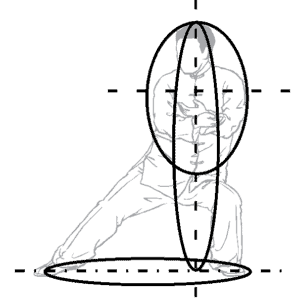
It includes
- Lan Zha. Tie up the Robe Leisurely.
- Liufeng-Si Bi. Six Are Sealed, Four Are Closed.
